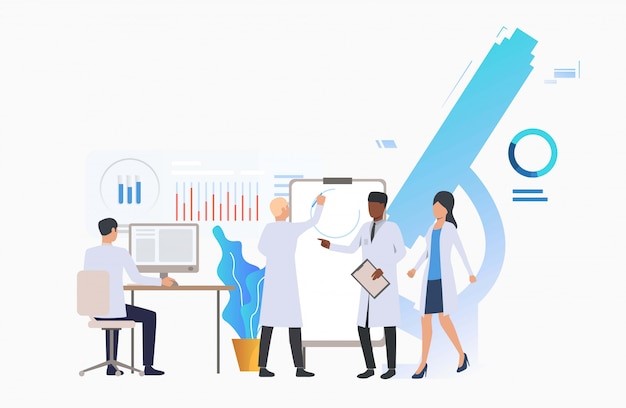In today’s fast-paced world, laboratory efficiency is more important than ever. With growing patient numbers and increasingly complex tests, labs face mounting pressure to stay organized while delivering accurate results quickly.
This is where Laboratory Information Systems (LIS) comes into play. Advanced LIS features are revolutionizing lab operations, making processes smoother, and reducing human error.
Using the right pathology lab software can dramatically improve workflow efficiency. In this blog, we’ll explore seven ways to streamline your lab workflow by harnessing the power of advanced LIS features.
1. Automated Test Ordering and Result Entry
One of the biggest time-savers for any lab is automation. With advanced LIS features, you can automatically order tests and enter results without manual intervention. This helps eliminate the need for handwritten forms and reduces the risk of errors during data entry.
When tests are ordered electronically, results are also delivered straight to the system, ensuring a seamless flow of information and reducing turnaround times. This system ensures your lab is always up to speed with minimal effort.
2. Enhanced Data Integration
Labs typically receive information from various sources, including physicians, medical records, and diagnostic equipment. Advanced LIS systems integrate data from these different sources, allowing lab technicians to have all relevant information in one place.
This eliminates the need for multiple systems or manual cross-checking, ensuring faster decision-making and reducing the chances of missing crucial data. Integration with other healthcare systems like Electronic Health Records (EHR) also ensures better communication and enhances collaboration with other departments.
3. Real-Time Data Tracking
Real-time tracking of samples, tests, and results is another powerful feature of modern LIS. With real-time data tracking, lab staff can monitor the status of tests, know exactly where a sample is in the process, and quickly identify any bottlenecks.
This reduces downtime, helps prioritize tasks, and ensures that the lab is operating at maximum efficiency. It also helps prevent lost or misplaced samples, a common challenge in busy labs.
4. Improved Inventory Management
Efficient inventory management is crucial for any lab. Advanced LIS systems allow labs to track their inventory in real-time, ensuring that supplies like reagents and consumables are always stocked.
When inventory levels run low, the system can automatically trigger reorder requests, ensuring you never run out of essential supplies. By keeping inventory in check, labs can prevent unnecessary delays caused by shortages and optimize their resource management.
5. Streamlined Reporting
Generating accurate and comprehensive reports is a key part of laboratory work. Advanced LIS software offers streamlined reporting features that allow technicians to generate reports quickly and accurately. Customizable templates can be set up, so reports are tailored to the lab’s specific needs.
These systems can also automatically generate reports based on test results, eliminating manual entry and reducing human error. As a result, reports are delivered faster and with fewer mistakes.
6. Increased Data Security
Data security is a top priority in any healthcare setting. Advanced LIS features come with enhanced security protocols to protect sensitive patient information. Encryption, secure logins, and audit trails are built into the system, ensuring that only authorized personnel can access specific data. This is particularly important in pathology labs, where patient confidentiality and compliance with regulations like HIPAA are crucial.
7. Better Resource Allocation
Finally, advanced LIS features can help with better resource allocation. By providing real-time data on workloads, technicians, and equipment usage, the system helps lab managers distribute tasks more efficiently. This ensures that no one is overburdened and that resources are used optimally. By allocating tasks based on availability and urgency, labs can operate more efficiently and avoid delays or bottlenecks.
Conclusion
Incorporating advanced LIS features into your laboratory operations is a game-changer for improving efficiency, reducing errors, and enhancing overall productivity. From automating test orders to improving data security, these tools can help your lab streamline its workflow and better serve patients. The right software can make a world of difference, allowing you to manage complex tasks with ease and focus on what matters most: delivering accurate results in a timely manner.
